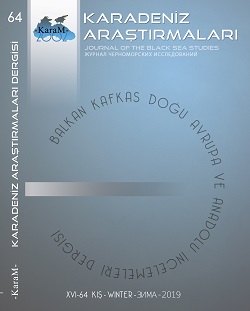Eski Uygurcada Cundī Buddha’nın Tasvir
The Portrait of Cundi Buddha in Old Uyghur
Author(s): Hacer TokyürekSubject(s): Comparative Studies of Religion, Sociology of Religion, History of Religion
Published by: Karadeniz Araştırmaları Merkezi
Keywords: dhāraṇī; mantra; mudra; Cuṇḍī Buddha; Old Uyghur;
Summary/Abstract: When we examine the history of religions, we see a lot of commonalities in terms of how each religion goes about practicing worship, as well as commonalities in terms of symbolism. The recitation of prayers and sacred word in order to approach the divine and in order achieve various gains is common to all religions, for instance. Tantric Buddhism is no exception to this rule, in which monks read the Buddha's dhāraṇī during maṇḍala ceremonies and re-enact the Buddha through mantras. Reciting these mantras internally allows one to more easily reach whatever it they so seek. Numerous Old Uyghur texts, namely the ‘Cuṇḍīdevīdhāraṇī/Buddha's dhāraṇī’ depict the Cuṇḍī Buddha, and even instruct us on how one should paint it, citing that the Cuṇḍī Buddha should be depicted sitting in a lotus flower position, protected by two dragons in a lake, and surrounded by three-eyed of Cuṇḍī. The Cuṇḍī Buddha, moreover, has eighteen hands, each of which holds various objects. This study will focus on these symbolic expressions and their semantics in Old Uyghur within context of how the Cuṇḍī Buddha is described/depicted.
Journal: Karadeniz Araştırmaları
- Issue Year: 2019
- Issue No: 64
- Page Range: 711-723
- Page Count: 13
- Language: Turkish

